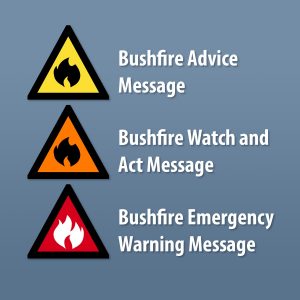Why are bushfire warnings being ignored by those in the most danger?
 The research is in.
The research is in.
When it comes to bushfire warnings the mantra for many of those threatened is still ‘seeing is believing’.
Whether it is seeing with their own eyes or a trusted neighbour’s, people in the path of a bushfire want confirmation before they take action. And while this is a very human response, it undermines the planning and knowledge of experts working hard to prevent tragedy.
So what is the problem?
Surprisingly there is nothing wrong with the bushfire warnings themselves.
The research published in the International Journal of Disaster Risk Reduction showed that 4 out of 5 respondents are satisfied with bushfire warnings.
They claim to understand the three-level alert process of ‘advice’, ’watch and act’, and ‘emergency warning’. The problem comes down to time and money.
For those who have evacuation as a last resort, the decision to leave is being delayed due to the costs involved. And it is these costs – especially when livestock is involved – that are prompting many to second guess the official warnings.
In fact several surveys across the country report ‘appreciable’ proportions of bushfire prone communities say they still follow the old ‘wait and see’ in an emergency no matter what the officials warnings are. It is a dangerous attitude that Australia fire services know will increase the risk of people leaving at the very last minute only to become trapped by a fire.
A small poultry farmer from Carwoola who escaped the 2017 New South Wales bushfires typifies this mindset:
“I was also keeping an eye on the … Fires Near Me app, the RFS app, for updates… just trying to gauge what their response was, whether it was as urgent as what it seemed. Because when you’re standing on your block looking at smoke that seemed to be a few kilometres away, it’s really hard to get any sense of urgency because it looks like it’s going away… Then yeah, when the wind changed we realised we just needed to get out.”
The farmer went on to explain how her livestock was driving her decision-making:
“Do you go through that whole evacuation process knowing that the fire looks like it’s going away from you and it could be for absolutely nothing? Because animals get very stressed when you grab them in a hurry. The chooks that I did get out all stress-moulted and freaked out, lost all their feathers. Yeah, it was incredibly stressful.”
To avoid such drastic and last-minute action, researchers suggest working with communication channels that communities trusted most – one another. Emergency services were encouraged to share photos and videos of the fire via social media so to ‘personalise and confirm the threat’ to members of the community. It also went as far as recommending Community Field Liaison Officers being dispatched to threatened areas to join locals who gather in person to discuss the fire threat.
Researchers concluded that the effectiveness of bushfire warnings hinge on the decision-making process of those threatened. Only by working with that process and not against it will ‘wait and see’ be unilaterally replaced by expert advice the next time a bushfire strikes.